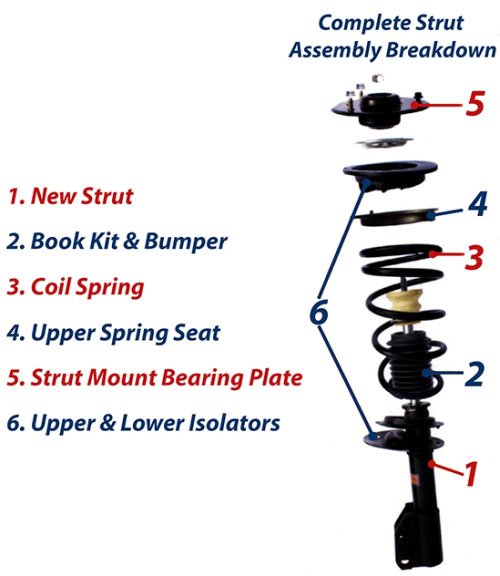February
HOW TO REPAIR SUSPENSION

The term "suspension" refers to a system of springs, shock absorbers and linkages that work together to keep the vehicle in contact with the road while maintaining traction. The suspension also protects the vehicle itself and any cargo or luggage from damage and wear. The design of the front and rear suspension of a car may be different depending on the layout of the automobile's drive line and purpose. Common kinds of suspension systems include: dependent, independent and double wishbone suspension systems.
While shocks and struts are two very different types of suspension systems, both types of dampers serve the same primary purpose: to counteract the motion of the spring. While the spring is there to take the initial force of a bump in the road, the shock or strut dampens that motion in order to keep the vehicle in control. The difference between shocks and struts lies in the structure of your vehicle’s suspension.
In a setup that uses traditional shock absorbers, the vehicle is primarily held up by the springs, and the shocks are located nearby. Since the springs bear the weight of the vehicle, you can technically drive a vehicle with no shocks whatsoever, though doing so is dangerous and ill-advised. Shock absorbers can be used with coil, leaf, air springs or torsion bars. Shock absorbers are easier to install because of their location on the vehicle’s suspension system, and usually cheaper to produce and buy because the design of the individual part is simpler.
On a MacPherson strut-type suspension, the strut contains the mounting points for a coil spring and a dampening element, which has the same internals as a standard gas-filled shock absorber. The strut, with a coil spring wrapped around it, is a structural component of the car that holds it up. On the front wheels, the strut is also part of the steering system, since on most vehicles, it attaches to the hub carrier or steering knuckle, and some alignment settings are adjusted directly on the strut. The advantages to this design are mainly packaging concerns. Since the strut fits inside of the coil spring, the combination takes up less room under the vehicle, especially since the vehicle has coil or air springs instead of unwieldy leaf springs or torsion bars. This design also makes initial assembly of the vehicle easier, since the spring, strut, hub and brakes can all be attached to the vehicle on the production line as one unit.


